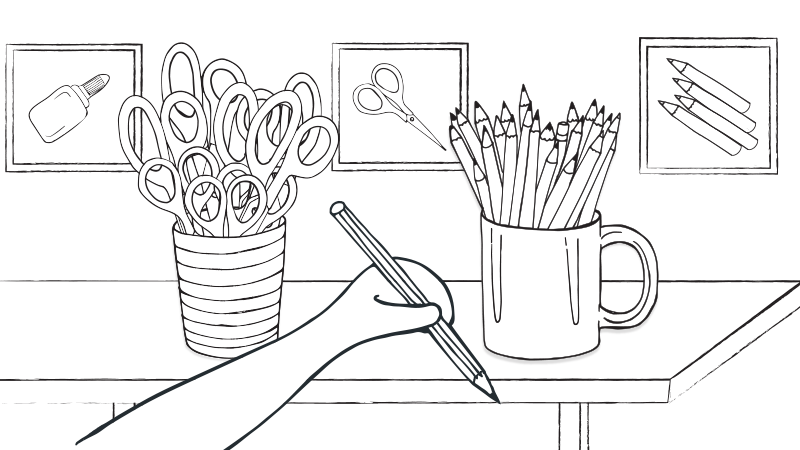Short description of the topic
Children discuss the importance of putting items back at their place. They think about ideas that encourage tidying up and create labels for objects with the help of photography.
Learning outcomes
-
Competencies
- Digital and media competence
- Social competences: working together in a group
- Linguistic competences: learning new vocabulary
- Relationship towards items and toys in the playroom
- Fine motor competence: creating labeling cards
-
Target group
3 years and up- Whole class
Work in pairs
In groups
- Whole class
-
Required materials
- Camera/phone/tablet
- Computer
- Printer
- Scissors
- laminator
- scotch tape

Download
(.pdf 344.92 KB)
Description of the activity (step by step)
Preparation:
Gather the children and read or tell a story about lost and found things to wake children’s interest and motivation. For example, you can tell a story of a lost pencil that cannot find its way home. It searches and searches and in the end finds his home with the help of a sign that tells it where to go. Then, talk about the importance of keeping the playroom in order: Why is it important to put things back on their place? How can you find things most easily? Do they have any ideas on how to remind everyone to put things back to the right place? What about signs, like the ones in shops? Can photographs help? Together, decide to create little signs to mark the correct place of every item and make tidying up easier.
Implementation:
Photograph items: in small groups, children photograph objects, toys, and didactic items located in the playroom, on the table, or on the floor. A group takes photos of art supplies. Another group takes photos in the home center and the third group takes photos in the center with social and board games. Transfer their photos to a computer and select the photos for each center together with each group. Print out the photos in appropriate sizes. The children then cut out the photos and laminate them to prevent any damage. Together, glue the laminated photos (pictorial representations) to the shelves, boxes, baskets, and drawers where items are located to mark where they need to be stored after using them or playing with them.
Reflection:
Together, look through all the glued photos (pictorial representations) and comment where everything goes. In the following days, observe whether or not the children have fewer difficulties in tidying up and planning the follow-up activities.
Variations and additional ideas
Make up a song or a verse to motivate children to tidy up: the song should say that every toy and tool should go back to its picture. Use the verse when you would like to encourage children to tidy up.
Instead of photographing every item, you could look for pictures of objects together on the internet.
Use the photographs to mark:
children’s drawers and folders
didactic toys and materials in other kindergarten rooms (storage rooms, closets, etc.)
objects and their place at home
Background information and didactical perspective
Equipping shelves, crates, boxes, folders, wardrobes, space for brushes, etc. with pictures is very important in the kindergarten. A large number of didactic means, toys, and requisites must always be accessible in certain places. With the help of pictures throughout the playrooms, washrooms, etc., children are encouraged to become independent in their everyday activities (dressing, personal hygiene, storing, and tidying up personal items). By involving them in the process of labeling items, they learn that they can use creativity as a means to organize their surroundings.




